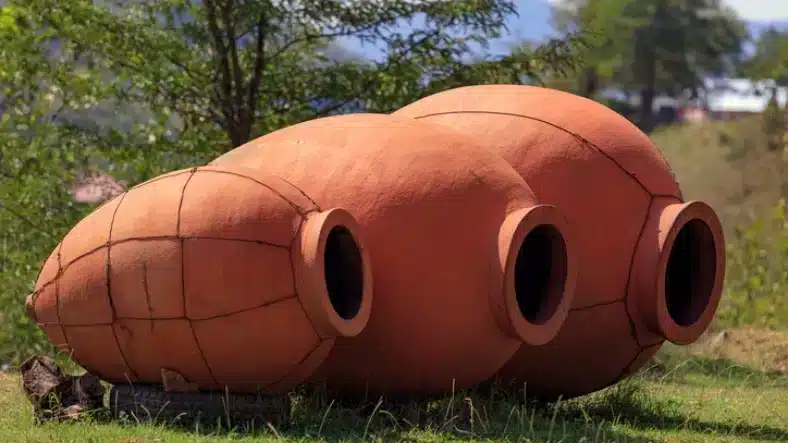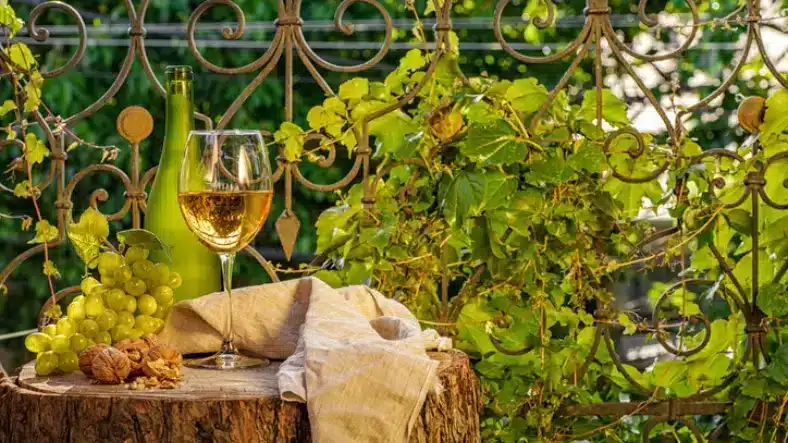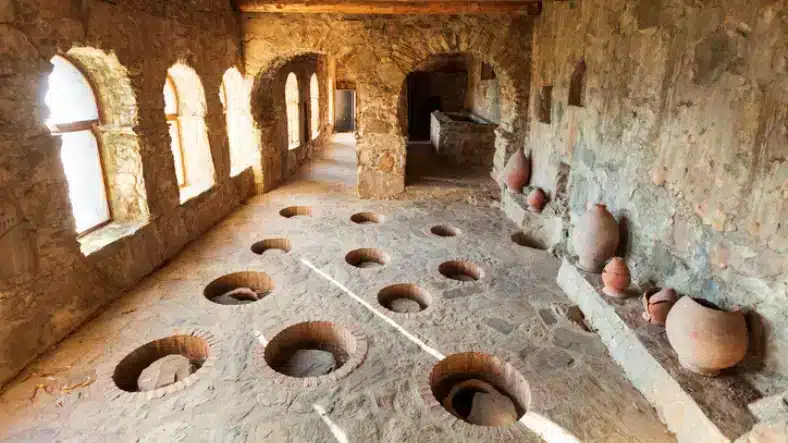Wine production using the traditional Qvevri method is an ancestral practice in Georgia, one of the oldest wine producers in the world. The Georgians invented this method over 8000 years ago and still use it today. To produce Qvevri wines, winemakers bury clay amphorae called Qvevri in the soil, without adding yeast or chemicals. UNESCO has declared this technique an intangible cultural heritage. Qvevri wines, with their unique flavor, are often associated with important social and cultural events in Georgia. Their amber or orange color, thick texture and complex flavor with aromas of fruit, honey, nuts and leather set them apart from other wines. More and more wine producers around the world are using this production method to create unique and interesting wines.

The Qvevri wine-making process involves burying large clay amphorae called Qvevris in the ground. The grapes are placed inside these amphorae, and natural fermentation begins without the addition of yeast or chemicals.
The Qvevri wine is then transferred to vats or bottles for aging, often for several months or years. It’s an important part of Georgian culture, often associated with important social and cultural events, and considered a symbol of Georgian hospitality.
Qvevri wines have a unique flavor distinct from other wines, with an amber or orange color, thick texture and complex aromas of fruit, honey, nuts and leather. They are generally served at room temperature or slightly chilled to avoid altering their aromas.
Qvevri wine is gaining in popularity worldwide, with more and more wine producers using this production method to produce unique and interesting wines. Wine lovers and sommeliers are increasingly attracted to Georgian wine because of its traditional production methods and unique taste.


Qvevris are buried for several reasons. Firstly, it helps regulate temperature during fermentation, as the underground temperature is more stable than the outside temperature, guaranteeing successful fermentation. What’s more, burying the Qvevris protects them from temperature variations and bad weather, resulting in richer, more intense flavors and aromas, guaranteeing the production of high-quality wines.
Finally, the burial of Qvevris is an ancient tradition in Georgia, practiced and respected for centuries, which adds a cultural dimension to Qvevri wine production and reinforces the importance of wine in Georgian culture.

First of all, potters carefully select the highest quality clay to make Qvevri and work it to make it more supple. They then shape the Qvevri by hand using a half-timbering technique.
The Qvevri is then air-dried for several weeks before being fired at high temperature in a special wood-fired kiln for several days. This firing allows the clay to harden and withstand the pressures of wine production.
After firing, the craftsmen carefully polish the Qvevri by hand to give it a smooth, uniform surface. Then they coat the inside with beeswax to sterilize it, and the Qvevri is ready for wine production.
Qvevri wine has a dense, complex texture that sets it apart from other wines, thanks to fermentation with the skins, seeds and stems of the grape. In addition, its distinctive aroma of fruit and spices is accompanied by an earthy note, due to the fermentation process in the Qvevris buried in the ground.
In terms of taste, Qvevri wine also stands out for its unique, complex flavor, with a fruity, spicy note and a certain acidity. The high tannin content also lends Qvevri a robust structure.
Click on the image to discover the qvevris manufacturing process on video!
You may also be interested!
Click one of our contacts below to chat on WhatsApp
Social Chat is free, download and try it now here!

